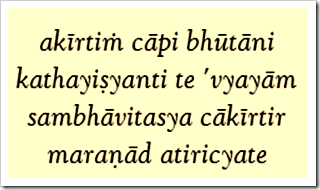
Sri Panchami is a Hindu festival dedicated to Goddess Saraswathi. It is celebrated on the fifth day (Panchami) of Sukla Paksha in the Lunar Month of Magha Masam that generally occurs during the months of January-February. In our Hindu religion and culture, child going to a school generally begins with a ritual called Aksharabhyasa (learning of alphabets), the foundation for education. Akshara means the one that will not perish. Abhyasa means practice. Anything that we acquire in this life may perish but, the knowledge acquired through Akshara Gnana will never perish and will be an eternal asset. Goddess Saraswathi, the presiding deity of such Akshara Gyana, the female Divine energy of Learning, Knowledge and Wisdom is said to have born on this auspicious day known as Sri Panchami. Inducting a child into Aksharabhyasa on this day is said to be highly auspicious for good progression in education.
Reference to Goddess Saraswathi, the divine consort of Lord Brahma one of the Trinity Lords we find in many Pouranic scripts like Padma Purana, Brahma Vaivartha Purana etc... It is said that many pouranic great Sages like Sri Veda Vyasa, Brihaspathi, Yajnavalkya, Vasista, Parasara, and Bharadwaja had worshipped Goddess Saraswathi in their spiritual pursuits. Saraswathi worship is essential for spiritual enlightenment. In the life history of Mantralaya Seer Sri Raghavendra Swamy, we find Goddess Saraswathi referred to as the Goddess responsible for giving direction for his Sanyasa Sweekara.
She is referred to as Vaakk Devi, the Goddess of Speech. For any student, poet, writer, analyst, journalist, astrologer, musician, singer, preacher, philosopher, etc… to become proficient and to excel in their field, Divine blessings and Grace of Vaakk Devi is very much essential. She is also known by other names like Vaani, Sarada, Bharathi, and Braahmi to name a few. A river by her name is also very famous, holy and spiritual in Hindu religion and philosophy that forms a part of the famous river trio Ganga, Yamuna and Saraswathi popularly known as Triveni.
Seated on a fully blossomed white Lotus, Goddess Saraswathi is generally depicted as Chaturbhuja (four hands) with Veena as her instrument which she will be holding in her two hands while in other two hands holding Vedas (Sacred scriptures) and a mala of Divine Rosary beads. White coloured Hamsa (Swan) is depicted as her vehicle (chariot) that symbolizes sattvik nature, purity, high intellectual capability and discrimination.
This day is also known as Vasantha Panchami that marks the beginning of a new season called Vasantha Ruthu the onset of Spring Season. Lord Sri Krishna mentioned in his Bhagavat Geeta that He is the Vasantha Ruthu among the seasons. Though this festival Sri Panchami is not very popular in South India, it is a very important festival that is widely celebrated with great fervor in the North, West Bengal and Maharastra. In North Eastern States of our country it is celebrated as the beginning of a New Year.
While Goddess Saraswathi worship is done round the year, certain special occasions are prescribed for an exclusive worship. One such occasion is on this auspicious day of Vasantha Panchami (Sri Panchami) and the other is during the Navarathri (Dussera) festival in the Lunar month of Aaswayuja on the 7th day (Sapthami) coinciding with Moola constellation. It is highly meritorious to worship Goddess Saraswathi on these days and to seek Her Grace to become learned, knowledgeable and wise.
In our country we find very few temples of Goddess Saraswathi. Out of two such famous temples dedicated to Goddess Saraswathi we find, one is in Kashmir. Ashtaadasa Shakthi Peeta Sthothram refers to this temple as Kaashmirethu Saraswathi, one of the 18 most revered places for worship of Goddess Shakthi. The other famous temple of Goddess Saraswathi is in Adilabad district of Andhra Pradesh in a place called Basar where, special celebrations and prayers are held on this day. We also find on this day of Sri Panchami many people inducting their children into Aksharabhyasa at this famous temple known as Gnana Saraswathi temple. We also find a temple of Goddess Saraswathi known as Sharada Devi at Sringeri in Karnataka state where the idol is said to have been consecrated by Adi Sankaracharya.
Let us pray and worship on this auspicious day Goddess Saraswathi who is respected and adored even by Devathas, to get rid of our sluggishness, lethargy and ignorance.
 “Unable to get the desired result, some made an excuse and stayed where they were, while others went to see the bow. Like a monkey examining a coconut, they each sat back down with their heads hanging down.” (Janaki Mangala, Chand 11.1)
“Unable to get the desired result, some made an excuse and stayed where they were, while others went to see the bow. Like a monkey examining a coconut, they each sat back down with their heads hanging down.” (Janaki Mangala, Chand 11.1) “People will always speak of your infamy, and for one who has been honored, dishonor is worse than death.” (Lord Krishna, Bhagavad-gita, 2.34)
“People will always speak of your infamy, and for one who has been honored, dishonor is worse than death.” (Lord Krishna, Bhagavad-gita, 2.34) In the Bhagavad-gita, Lord Krishna tells Arjuna that for a celebrated warrior, dishonor is worse than death. This is because they were previously honored. They were known for some reason or another. Through dishonor, they tarnish their reputation. The eager journalists pay close attention to scandal for this very reason. If they can take down a celebrated figure through reporting their flaws, their story will be very popular. The dishonor will draw much attention because it is focused on someone who was previously honored. Dishonor to someone who was never honored isn’t as important.
In the Bhagavad-gita, Lord Krishna tells Arjuna that for a celebrated warrior, dishonor is worse than death. This is because they were previously honored. They were known for some reason or another. Through dishonor, they tarnish their reputation. The eager journalists pay close attention to scandal for this very reason. If they can take down a celebrated figure through reporting their flaws, their story will be very popular. The dishonor will draw much attention because it is focused on someone who was previously honored. Dishonor to someone who was never honored isn’t as important.